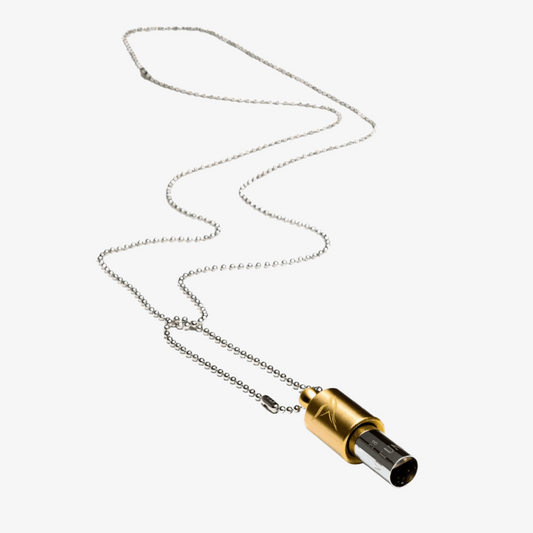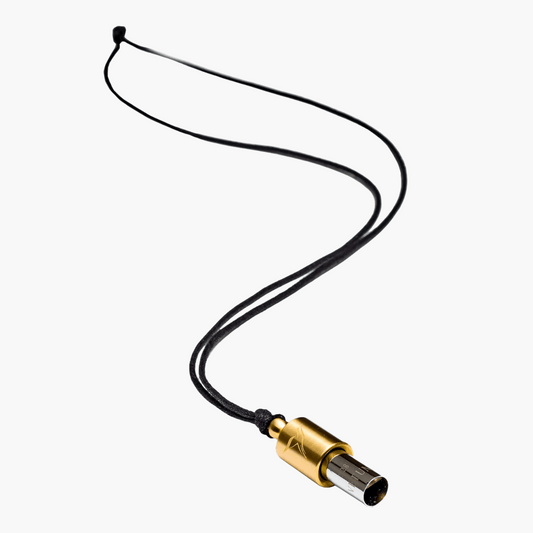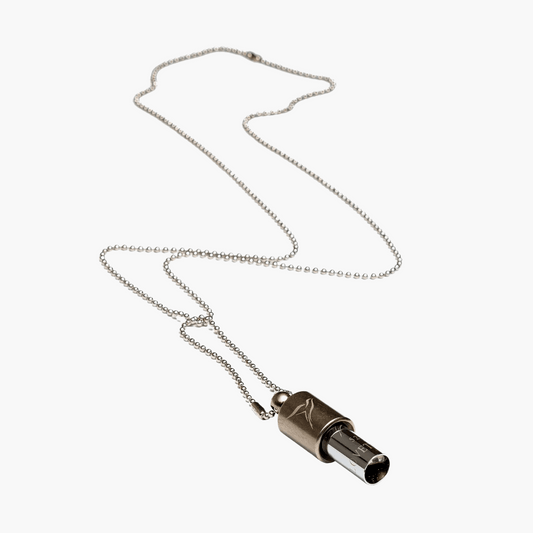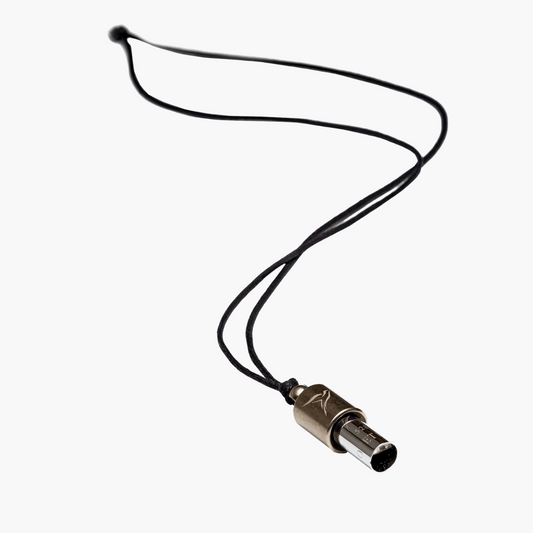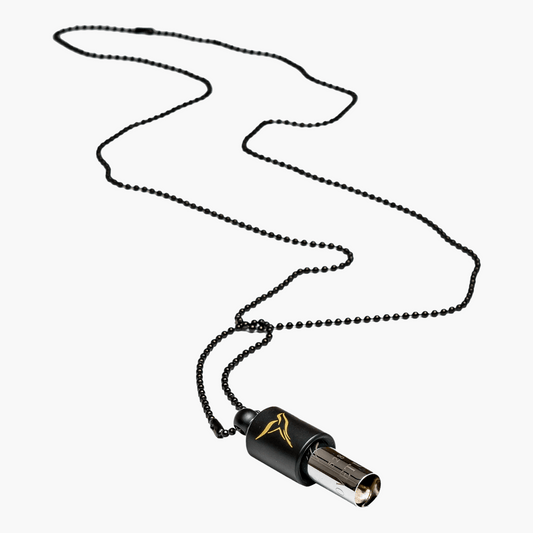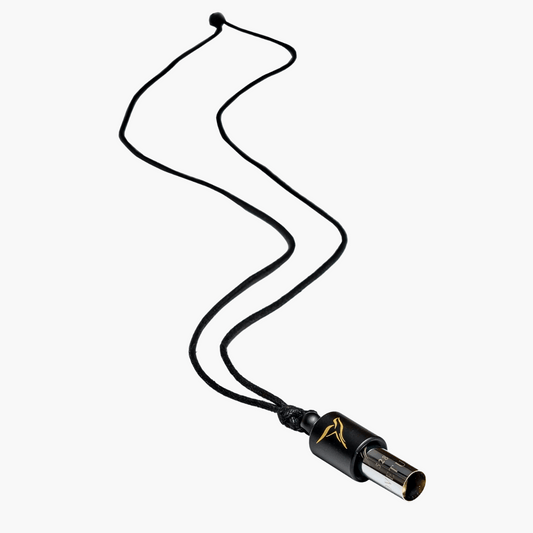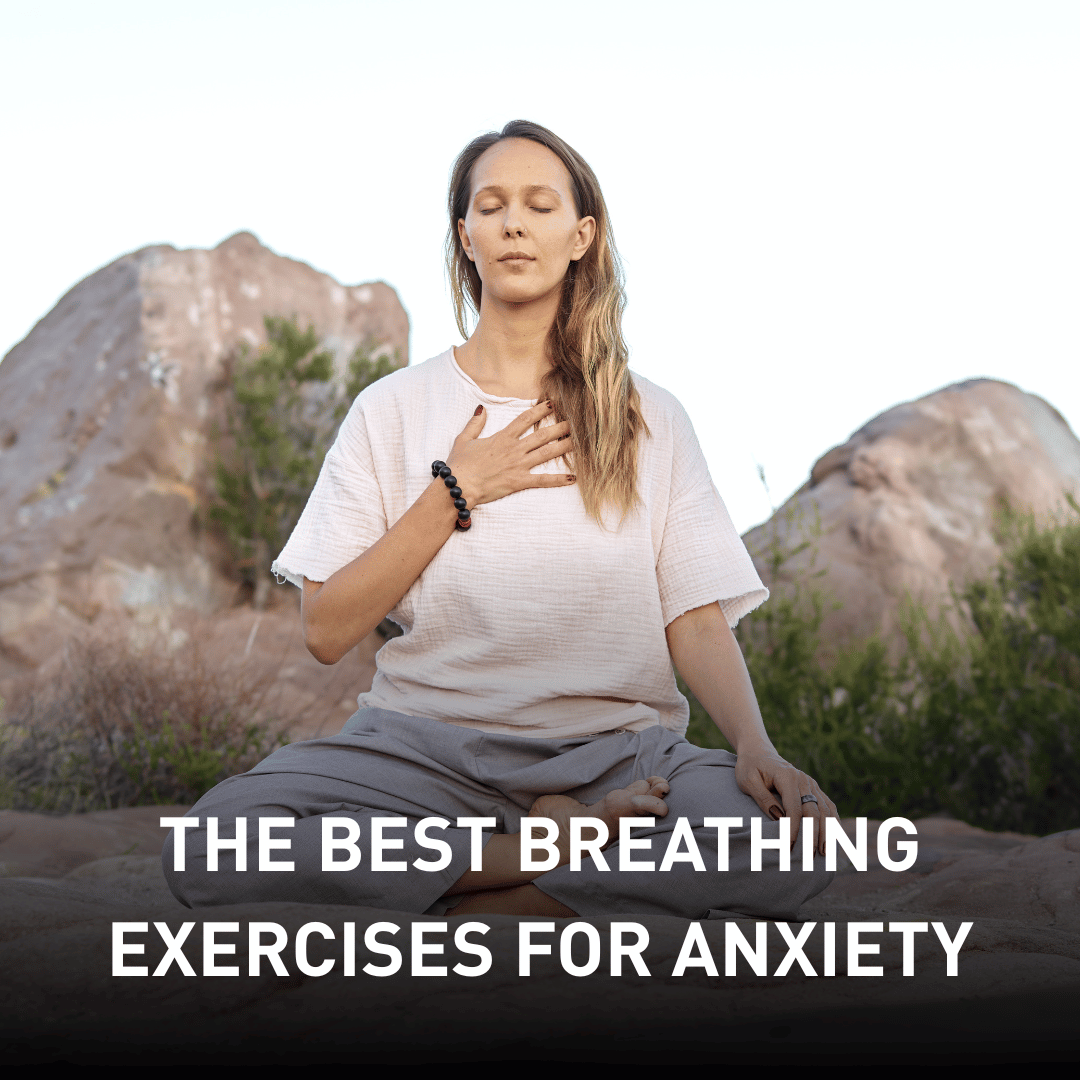
The Best Breathing Exercises for Anxiety Relief and Inner Peace
In a world that rarely slows down, it’s no surprise that stress and anxiety have become everyday experiences for many. Whether it's racing thoughts, muscle tension, or shallow breaths, these symptoms can pull us away from our center — from peace, from presence, from our spiritual path. But there's a simple, powerful solution within you at all times: your breath.
Intentional breathing isn't just a wellness trend — it’s an ancient, evidence-based practice that speaks directly to the nervous system, shifting us from fight or flight into a relaxed state of inner calm.
And when we combine breathing exercises for anxiety with mindful tools like the Lovetuner, we amplify the impact, bringing even deeper harmony to the mind-body connection.
This guide explores the most effective breathing techniques for anxiety, offering you a sacred pause in the noise of daily life — and a gentle return to your heart, your breath, and your inner peace.
Why Breathing Techniques for Anxiety Work to Calm the Mind and Body
When we feel anxious, the body activates the sympathetic nervous system — our “fight or flight” response. Heart rate increases, shallow breaths become the norm, and the mind races. But conscious breathing acts as a circuit breaker.
By practicing specific breathing exercises, we stimulate the parasympathetic nervous system, also called the “rest and digest” state. This leads to:
-
Lower blood pressure
-
Reduced muscle tension
-
Slower heart rate
-
Calmer emotional state
-
Improved lung function
-
Release of stored stress
And the best part? These relaxation techniques are completely natural, accessible, and highly effective — even just a few minutes a day can make a profound difference.
Let’s explore the most powerful techniques, including how to use the Lovetuner to deepen the experience.
1. Deep Breathing: The Foundation of Calm
One of the most well-known and effective breathing techniques for anxiety is simply deep breathing — also called abdominal or belly breathing. This technique slows down the breath and grounds you in the present moment.
How to Practice Deep Breathing:
-
Sit comfortably in a relaxed position with your shoulders relaxed.
-
Place one hand on your chest and the other on your belly.
-
Inhale slowly through your nose, directing the breath deep into your belly.
-
You should feel your belly (not your chest) rise.
-
Exhale slowly through your mouth or pursed lips.
-
Repeat for 3–5 minutes, breathing deeply and slowly.
Tip: Pair this with the Lovetuner by exhaling through the device to release the 528Hz frequency, activating the relaxation response and enhancing breath control.
2. Diaphragmatic Breathing: For Full-Body Relaxation
Often used in therapy and meditation, diaphragmatic breathing teaches the body to breathe fully and efficiently. It is especially helpful for healthy adults dealing with frequent panic attacks or daily anxiety.
How to Do Diaphragmatic Breathing:
-
Lie down or sit in a comfortable chair.
-
Place one hand on your belly, one on your chest.
-
Inhale slowly through your nose, allowing your diaphragm (belly) to rise.
-
Exhale slowly through pursed lips, gently pressing on your abdomen.
-
Focus on keeping the chest still and letting the body slowly expand and contract.
Practicing this simple breathing exercise regularly improves oxygen intake, enhances coherent breathing, and helps reduce anxiety.
3. Box Breathing: A Yogic Pattern for Focus and Calm
Also called “square breathing,” box breathing is a four-part breathing technique often used by Navy SEALs, athletes, and monks alike. It brings structure and rhythm to the breath, calming the nervous system and improving focus.
Box Breathing Instructions:
-
Inhale slowly for 4 counts.
-
Hold your breath for 4 counts.
-
Exhale slowly for 4 counts.
-
Hold for 4 counts.
-
Repeat for 5–10 cycles.
This technique is a favorite for calming the mind during stress and anxiety and is ideal for people with frequent panic attacks.
4. Alternate Nostril Breathing: Balance for Body and Mind
Known in yogic traditions as Nadi Shodhana, alternate nostril breathing brings balance to the left and right sides of the brain, clears blocked energy channels, and stabilizes emotional swings.
How to Practice Alternate Nostril Breathing:
-
Sit in a seated position, spine tall.
-
Use your right thumb to gently close your right nostril.
-
Inhale slowly through the left nostril.
-
Close the left nostril with your ring finger, and exhale slowly through the right nostril.
-
Inhale through the right, close, and exhale through the left.
-
This completes one cycle. Repeat for 5–10 rounds.
Use your right ring finger and right thumb for easier control, and keep your shoulders relaxed. This practice not only calms the mind but supports lung function, balances hormones, and reduces anxiety symptoms.
5. Coherent Breathing: The Science of Rhythm
Also called coherent breathing, this practice involves breathing at a steady pace of about 5–6 breaths per minute — an optimal rate to harmonize heart rate, brain waves, and nervous system activity.
Try This:
-
Inhale slowly for a count of 5.
-
Exhale slowly for a count of 5.
-
Repeat for 10–15 minutes.
This technique has been studied by institutions like Harvard Medical School and shown to relieve stress, lower cortisol, and induce a relaxed state.
Pairing it with 528Hz tuning enhances the coherence between heart and mind, creating a deep sense of connection and peace.
6. Progressive Muscle Relaxation with Breath Awareness
Combining muscle relaxation with breathing exercises offers powerful stress relief. This technique is especially helpful when anxiety interferes with sleep or daily function.
How to Do It:
-
Sit or lie down in a comfortable chair or bed.
-
Take a few deep breaths.
-
Starting at your feet, tense the muscles for 5 seconds while you inhale.
-
Exhale slowly as you release the tension.
-
Move upward — calves, thighs, abdomen, arms, shoulders, face — tensing and releasing with your breath.
This practice releases muscle tension, promotes body awareness, and supports the parasympathetic nervous system.
7. Lion’s Breath: Releasing Inner Fire
Sometimes anxiety needs to be released physically and emotionally. Lion’s breath, a dynamic breathing technique, helps release frustration and clear emotional stagnation.
How to Practice:
-
Kneel or sit in a seated position.
-
Inhale deeply through your nose.
-
Open your mouth wide, stick out your tongue, and exhale forcefully with a loud “haaaa” sound.
-
Let your breath be expressive. Repeat 3–5 times.
This fun, primal technique relieves stress, improves vocal strength, and supports yogic breathing practices.
8. Pursed Lip Breathing for Healthy Adults: Gentle Control for Acute Stress
Perfect for those moments when you're feeling stressed or breathless, pursed lip breathing slows exhalation, increases oxygen exchange, and offers almost instant calm.
How to Practice:
-
Inhale slowly through your nose for 2 counts.
-
Purse your lips as if blowing out a candle.
-
Exhale slowly for 4 counts.
-
Repeat as needed.
This technique improves breath control and is recommended for healthy adults and people with respiratory challenges.
How the Lovetuner Deepens Your Breathing Practice
The Lovetuner is a wearable 528Hz mindfulness tool that turns every exhale into a healing experience. When you gently breathe out through the tuner, it emits the Love Frequency, instantly grounding you in the moment.
By pairing your favorite breathing techniques for anxiety with the Lovetuner, you:
-
Enhance relaxation techniques
-
Train your body in slow breathing
-
Trigger the relaxation response faster
-
Deepen the mind-body connection
-
Support your journey toward inner peace
💛 It’s more than a tool — it’s a spiritual anchor, a breath ritual, and a sound medicine practice in one.
Creating a Daily Ritual with Breathing Exercises
Building a consistent breathwork practice doesn’t require hours of time — just a few additional minutes of presence and intention can shift your entire day.
Here’s a simple routine to try:
| Time of Day | Breathing Practice | Tips |
|---|---|---|
| Morning | Deep breathing + Lovetuner | Set your intention for the day |
| Midday | Box breathing | Reset your mind after work stress |
| Evening | Diaphragmatic breathing | Calm your body before bed |
| As Needed | Alternate nostril breathing | Ground your energy |
| In Stress | Pursed lip breathing | Stay calm and centered |
The Science Behind Breath: How the Following Exercises Calm Anxiety and Promote Relaxation
Among the many breathing exercises available, those that encourage slow, conscious exhalation can have the most positive effects on your mind and body.
Practices that focus on a relaxing breath not only help calm anxiety but also aid in regulating carbon dioxide levels in the blood, which supports clearer thinking and emotional balance.
Try this: sit with your mouth closed, spine tall, and gently bring your left hand to rest on your belly. Use your middle fingers of the right hand to lightly touch your forehead while your right hand nostril is closed with your thumb. Inhale slowly through the left side with the nose closed, and exhale slowly, switching nostrils with each round.
The following exercises not only enhance awareness of how your body feels, but also help you feel calmer, promote relaxation, and control stress.
With regular practice, the body learns to associate breathwork with peace — creating space for healing and presence.
Listening to Your Body: What Breathing Teaches Us
When we pause to breathe, we begin to listen — not just to our breath, but to our inner world. Breath is a messenger. It tells us when we're safe, when we're anxious, when we need rest or connection.
Through consistent practice, these breathing techniques become a form of spiritual meditation, revealing the space between stimulus and response. In that space, we find choice, awareness, and freedom.
Breath as a Spiritual Practice: Returning to Presence
In spiritual traditions around the world, breath is sacred. It is life force, prana, the bridge between body and spirit.
By integrating conscious breathwork into your life, especially alongside 528Hz tuning, you:
-
Deepen your spiritual awareness
-
Heal anxiety at its root
-
Cultivate inner peace
-
Strengthen your emotional resilience
It’s a reminder that healing doesn’t come from running away — it comes from gently breathing through what is, moment by moment.
When You Feel Anxious, Take a Deep Breath and Come Home to Yourself
Anxiety may be part of life, but it doesn’t have to define it. When you learn to work with your breath, you reclaim your power. You shift from chaos to calm, from fear to faith, from disconnection to presence.
So, next time you feel anxious, remember this:
Your breath is your anchor.
Your breath is your healer.
Your breath is your home.
Let it guide you back — one breath, one moment, one peaceful exhale at a time.
Experience the Power of 528Hz
Join thousands who have transformed their lives through the healing frequency of love. Your journey to inner harmony starts with a single breath.


